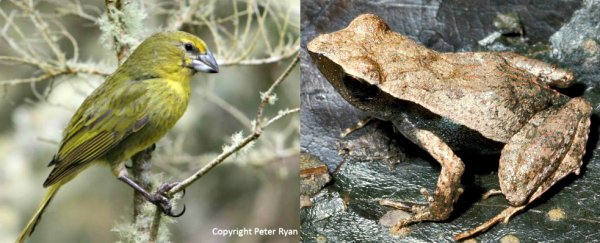A new study has revealed that the majority of endangered vertebrate species - 841 to be precise - could be saved from extinction with immediate action and an investment of just over US$1 million per species per year. But, unfortunately, there are 15 animals whose chances of surviving are upsettingly low, even if we start putting into place conservation efforts now.
The study employs an "conservation opportunity index", which uses measurable indicators to quantify how likely it is that we're going to be able to keep a species alive, both in its natural habitat and in back-up zoo populations.
The results, which have now been published in Current Biology, may sound a little morbid, but given the fact that we have such limited resources for conservation, the team hopes that their work will help highlight where money needs to be spent, and also reinforce that the investment will be worthwhile.
"Conservation opportunity evaluations like ours show the urgency of implementing management actions before it is too late," said one of the lead researchers, Dalia A. Conde from the University of South Denmark, in a press release. "However, it is imperative to rationally determine actions for species that we found to have the lowest chances of successful habitat and zoo conservation actions."
To work this out, the team measured the cost of, and potential for, conserving 841 species of mammals, reptiles, birds, and amphibians on the IUCN Red list and those listed by the Alliance for Zero Extinction (AZE) as being located in just a single site on the planet.
The good news is that we could save the majority of those species for a total investment of US$1.3 billion per year, with 39 percent of the animals scoring high for conservation opportunities. Of that budget, a little over $1.1 billion would need to be used to conserve species in their natural habitats, and the rest would support complementary breeding programs in zoos.
"Although the cost seems high, safeguarding these species is essential if we want to reduce the extinction rate by 2020," Hugh Possingham from the University of Queensland in Australia, who was involved in the research, said in the release. "When compared to global government spending on other sectors - such as US defence spending, which is more than 500 times greater - an investment in protecting high biodiversity value sites is minor."
But there's also bad news, the study showed that, regardless of our investment, the chance of the 15 animals on the list below surviving is, well, pretty damn low.
These birds, amphibians and mammals were classified as being in imminent danger of extinction because of a combination of problems with their habitat, such as the likelihood of urbanisation, political instability and/or high costs of habitat protection and management. These species also had a low chance of surviving in zoos due to a lack of breeding expertise or high costs.
Here they are in no particular order, we hope your favourite's not on there:
Amphibians:
- Bay Lycian salamander, Lyciasalamandra billae, Turkey.
- Perereca, Bokermannohyla izecksohni, Brazil.
- Campo Grande tree frog, Hypsiboas dulcimer, Brazil.
- Santa Cruz dwarf frog, Physalaemus soaresi, Brazil (pictured above, right).
- Zorro bubble-nest frog, Pseudophilautus zorro, Sri Lanka.
- Allobates juanii, Colombia.
Birds:
- Ash's lark, Mirafra ashi, Somalia.
- Tahiti monarch, Pomarea nigra, French Polynesia.
- Zino's petrel, Pterodroma madeira, Madeira.
- Mascarene petrel, Pseudobulweria aterrima, Reunion Island.
- Wilkins's finch, Nesospiza wilkinsi, Tristan da Cunha (pictured above, left).
- Amsterdam albatross, Diomedea amsterdamensis, New Amsterdam (Amsterdam Island).
Mammals:
- Mount Lefo brush-furred mouse, Lophuromys eisentrauti, Cameroon.
- Chiapan climbing rat, Tylomys bullaris, Mexico.
- Tropical pocket gopher, Geomys tropicalis.
But not all hope is lost. Now that we have this information, it will hopefully light a fire under researchers to find out more about how these species live and breed, and how we could potentially establish zoo populations.
"Our exercise gives us hope for saving many highly endangered species from extinction, but actions need to be taken immediately and, for species restricted to one location, an integrative conservation approach is needed," said one of the team, John E. Fa from the Imperial College in the UK, in the release.
